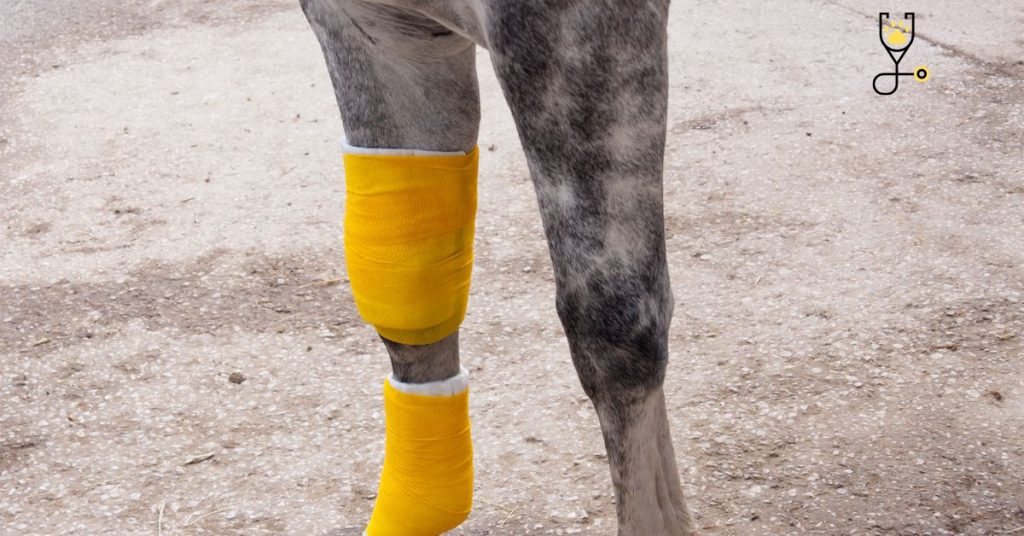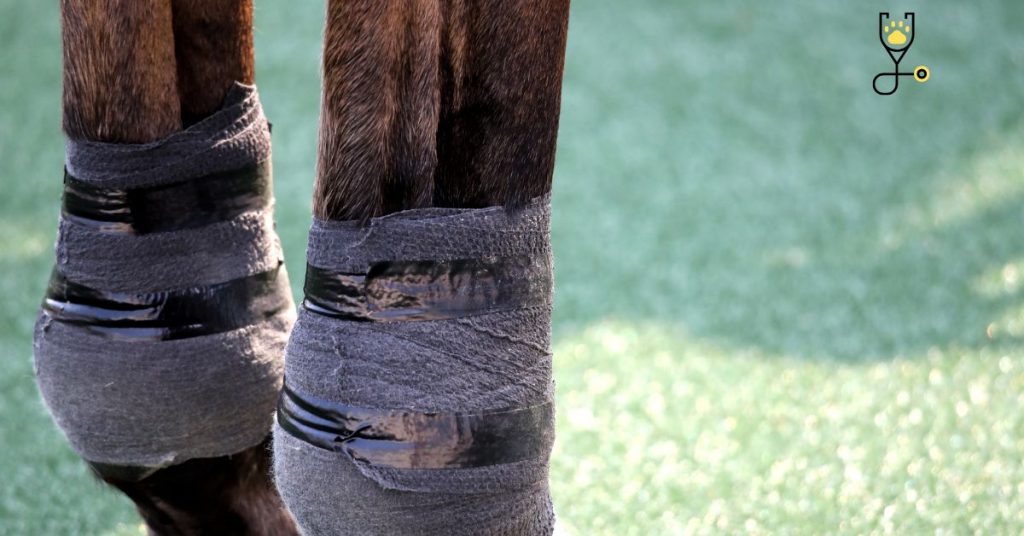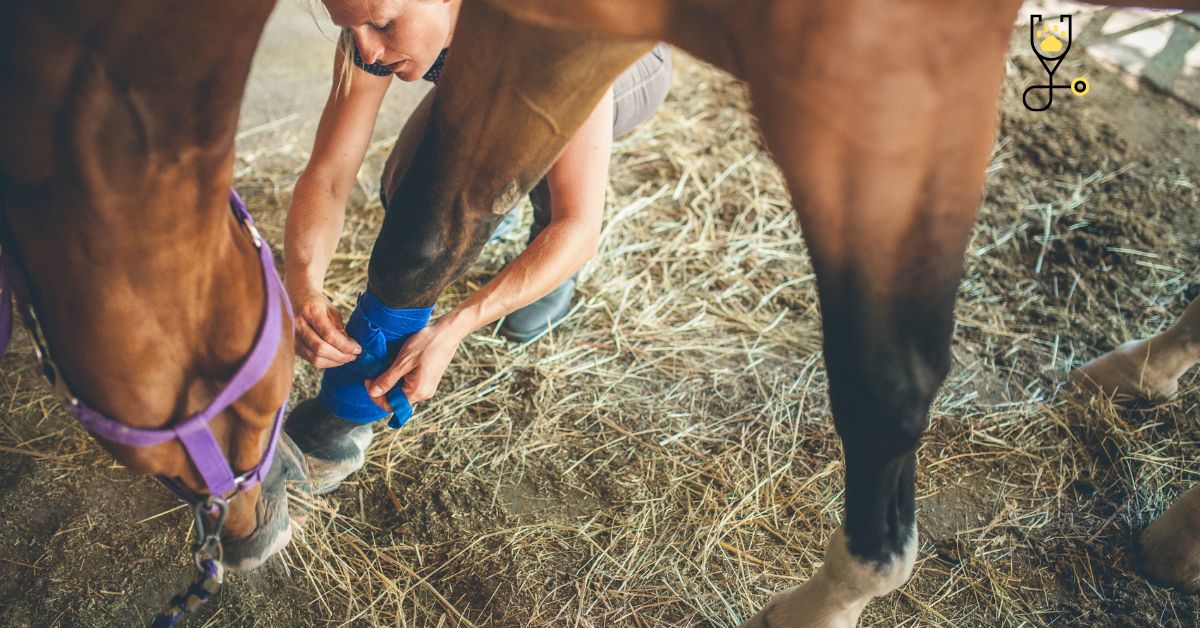Horses are amazing creatures that have been an important part of human life for centuries. They are used for transportation, farming, and even entertainment. However, like all animals, they can get sick. One common ailment in horses is called grease heel. In this blog post, we will discuss the symptoms, causes, treatment, and prevention of grease heels in horses. We hope you find this information helpful and informative!
What Is Grease Heel?
Grease heel, also known as scratches, is a condition that affects the horse’s foot. It is characterized by inflammation and scabs on the heels and in between the toes. The condition is caused by bacteria or fungi that enter the horse’s foot through cracks in the skin. Most commonly seen in wet and muddy conditions, grease heels can be very painful for horses. It can also lead to lameness if left untreated.

Symptoms of Grease Heel
1. Red And Cracked Skin-Grease Heel
Red And Cracked Skin-Grease Heel often begins with red, dry, and cracked skin on the heels. The cracks may be deep enough to bleed. These cracks can become infected. The skin may also be thick and a pain. Red And Cracked Skin-Grease Heel is a common condition that can be treated at home.
2. Pain And Inflammation
Pain and inflammation are common symptoms of Grease Heel. The pain is usually worse when pressure is applied to the heel, such as when walking or standing. The inflammation may make the heel warm to the touch.
3. Calluses And Corns
Calluses and corns are other common symptom of Grease Heel. Calluses are areas of thickened skin that develop in response to friction or pressure. They may be painful and can make it difficult to walk or stand. Corns are similar to calluses but they typically develop on the toes.
4. Blisters
Blisters are another common symptom of Grease Heel. They are usually filled with clear fluid and can be painful. Blisters may make it difficult to walk or stand.
5. Infection
Infection is a serious complication of Grease Heel. The cracks in the skin can become infected with bacteria or fungi. This can lead to redness, swelling, and pain. If the infection spreads, it can cause fever and chills. Infection can be serious and should be treated by a healthcare provider.

Causes of Grease Heel
1. Wet And Muddy Conditions-Grease Heel
Wet and muddy conditions are the most common cause of Grease Heels. The bacteria or fungi that cause the condition thrive in these conditions. Horses that live in wet and muddy environments are more likely to develop the condition.
2. Poor Hoof Care-Grease Heel
Poor hoof care is another common cause of Grease Heel. If the horse’s hooves are not cleaned and trimmed regularly, cracks can develop in the skin. These cracks can become infected with bacteria or fungi.
3. Allergies-Grease Heel
Allergies are another possible cause of Grease Heel. Some horses are allergic to the bacteria or fungi that cause the condition. Allergic reactions can lead to red, itchy skin.
4. Trauma-Grease Heel
Trauma is another possible cause of Grease Heel. If the horse steps on something sharp, it can create a crack in the skin. This crack can become infected with bacteria or fungi.
5. Genetics-Grease Heel
Genetics is another possible cause of Grease Heel. Some horses are simply more susceptible to the condition than others.
Treatment of Grease Heel
1. Topical Medications-Grease Heel
Topical medications are the most common treatment for Grease Heels. These medications are applied directly to the affected area. They can help to reduce inflammation and pain. Medicated shampoos and ointments are also available.
2. Systemic Medications-Grease Heel
Systemic medications are another treatment option for Grease Heels. These medications are taken orally or injected. They can help to reduce inflammation and pain. Antibiotics may be prescribed if the condition is infected.
3. Surgery-Grease Heel
Surgery is an option for severe cases of Grease Heel. The affected area may be removed or a skin graft may be performed. Surgery can be painful and recovery can take several weeks.
4. Home Remedies-Grease Heel
There are some home remedies that may help to treat Grease Heels. Soaking the affected area in warm water can help to reduce pain and inflammation. Applying a topical antibiotic ointment can also be helpful.

5. Prevention-Grease Heel
There are some things that can be done to prevent Grease Heels. Keeping the horse’s hooves clean and dry is the best way to prevent the condition. Allergic reactions can be prevented by avoiding exposure to allergens. Trauma can be prevented by being careful when handling the horse.
Preventions of Grease Heel
-Regular hoof care
-Avoidance of allergens
-Proper handling to avoid trauma
-Maintaining a clean and dry environment
When to see a doctor
If you think you or your horse has Grease Heels, it is important to see a doctor. This condition can be painful and can lead to serious complications if not treated. A healthcare provider can diagnose the condition and develop a treatment plan.
Prognosis Of Grease Heel
The prognosis for Grease Heels is generally good. With proper treatment, the condition can be resolved. Complications are rare but can occur. If the condition is left untreated, it can lead to serious complications.
Conclusion
Grease Heel is a condition that can be painful and uncomfortable. It is important to see a doctor if you think you or your horse has the condition. With proper treatment, the condition can be resolved. Complications are rare but can occur. Preventing the condition is the best way to avoid complications.
Frequently Asked Questions
1. What is Grease Heel?
Grease Heel is a condition that can be painful and uncomfortable. It is important to see a doctor if you think you or your horse has the condition. With proper treatment, the condition can be resolved. Complications are rare but can occur. Preventing the condition is the best way to avoid complications.
2. What causes Grease Heel?
There are several possible causes of Grease Heel. These include poor hoof care, allergies, trauma, genetics, and exposure to wet or muddy conditions.
3. How is Grease Heel treated?
The most common treatments for Grease Heels are topical medications and systemic medications. Surgery is an option for severe cases. There are also some home remedies that may help to treat the condition.
4. What is the prognosis for Grease Heel?
The prognosis for Grease Heel is generally good. With proper treatment, the condition can be resolved. Complications are rare but can occur. If the condition is left untreated, it can lead to serious complications.
5. How can Grease Heel be prevented?
There are some things that can be done to prevent Grease Heels. Keeping the horse’s hooves clean and dry is the best way to prevent the condition. Allergic reactions can be prevented by avoiding exposure to allergens. Trauma can be prevented by being careful when handling the horse.





